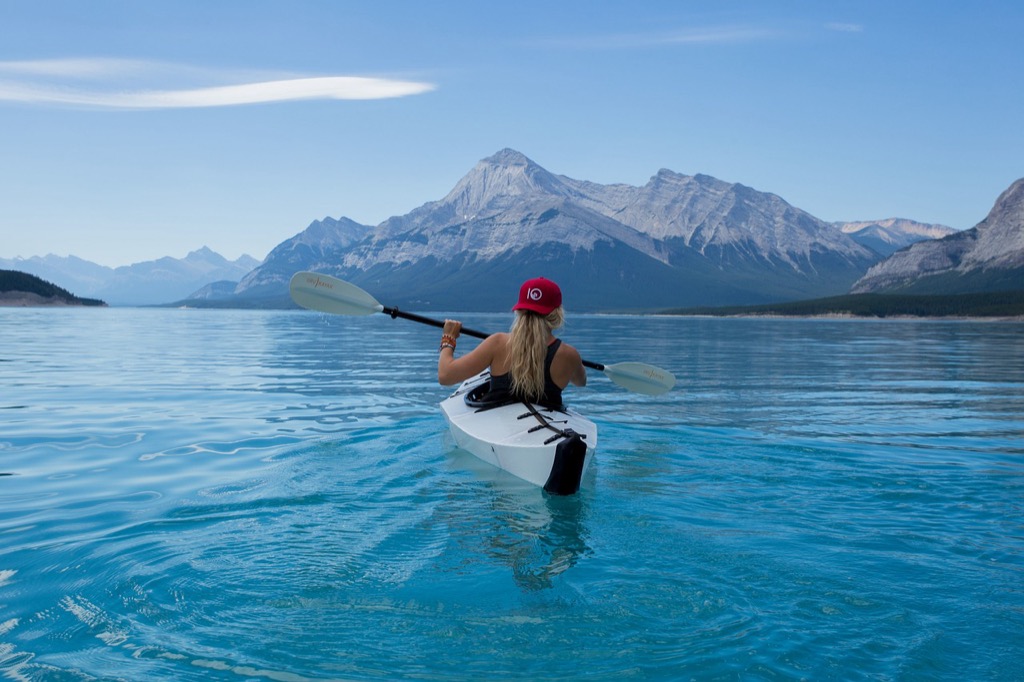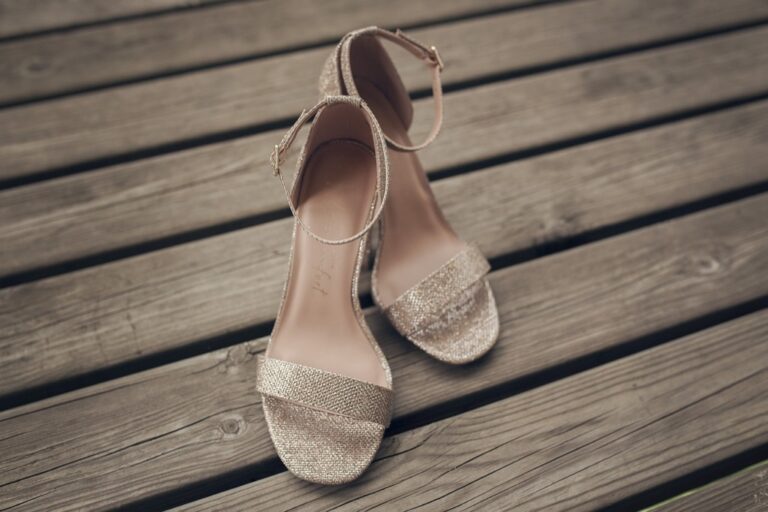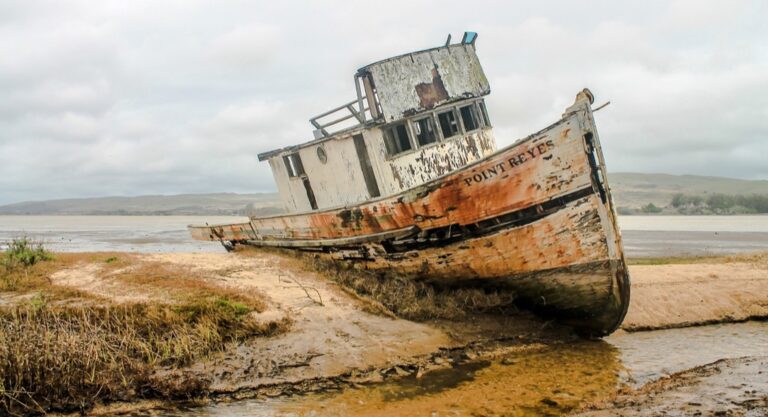6 Ways to Protect Your Phone While Kayaking That Pro Paddlers Swear By
Discover 6 essential strategies to keep your phone safe and dry while kayaking. From waterproof cases to backup power, protect your device on the water.
Your phone doesn’t have to become fish food when you hit the water. Kayaking presents unique challenges for keeping your device safe and dry while you’re navigating rivers lakes and coastal waters.
Whether you’re a weekend warrior or serious paddler you need reliable protection strategies that won’t interfere with your adventure. Smart preparation means you can capture those perfect waterside moments without worrying about expensive water damage or complete device loss.
Disclosure: As an Amazon Associate, this site earns from qualifying purchases. Thank you!
Use a Waterproof Phone Case
Protect your phone from water damage with this IPX8 waterproof pouch. The touch-screen compatible design allows for underwater photos and phone use, and it fits most phones with or without a case.
Your phone’s survival during kayaking adventures depends entirely on choosing the right waterproof protection. A quality waterproof case transforms your vulnerable device into a water-ready companion that’ll capture every paddle stroke and scenic moment.
Choose a Certified Waterproof Rating
Look for cases with IPX7 or IPX8 ratings that guarantee submersion protection up to specific depths. IPX7 cases handle temporary dunking while IPX8 models survive deeper submersion for longer periods. Skip anything without official IP certification—your phone’s life depends on proven standards, not marketing claims.
Test the Seal Before Your Trip
Always perform a tissue paper test before hitting the water with your expensive device inside. Place tissue in the case, seal it completely, and submerge in a sink for 10 minutes. Dry tissue means reliable protection, while wet tissue signals potential disaster waiting to happen on the water.
This bulk pack includes 100 sheets of 14x20" white tissue paper, ideal for crafting, gift wrapping, and decorations. The versatile size and elegant color make it perfect for any occasion or DIY project.
Consider Touch-Screen Compatibility
Premium waterproof cases maintain full touchscreen functionality while cheaper options create frustrating dead zones or require excessive pressure. Test camera functions, scrolling, and app navigation before your trip. You’ll want seamless photo capture when that perfect sunset moment appears during your paddle.
Invest in a Floating Phone Holder
You’ll want a floating holder as your backup safety net when your waterproof case fails or gets lost overboard. Even the most secure phone protection can slip from wet hands during an unexpected paddle splash or rough water conditions.
Select a Brightly Colored Lanyard
Choose neon orange, yellow, or hot pink lanyards for maximum visibility in murky lake water or choppy river conditions. Bright colors make recovery possible when your phone floats away from your kayak. Dark colors like black or navy blue disappear instantly against water surfaces, making retrieval nearly impossible even in shallow areas.
Attach Multiple Secure Connection Points
Connect your floating holder to both your life jacket and kayak rigging using dual attachment clips or carabiners. Single connection points fail when hardware breaks or detaches during rough paddling sessions. Multiple anchor points ensure your phone stays with you even if one connection fails during capsizing or aggressive maneuvering through rapids.
Choose Adjustable Strap Length
Select holders with 12-24 inch adjustable straps that accommodate different paddling positions and kayak cockpit sizes. Fixed-length straps create tension issues when you lean forward to paddle or need quick phone access for navigation. Adjustable systems let you customize the distance based on your specific kayak setup and personal reach preferences during active paddling.
Store Your Phone in a Dry Bag
A dry bag serves as your phone’s ultimate backup protection when waterproof cases fail or get lost overboard. You’ll want this redundant layer of security for serious kayaking adventures where phone replacement isn’t an option.
Pick the Right Size for Your Needs
Choose a 5-liter dry bag for phones plus essentials like keys and wallet, or go smaller with a 2-liter option for phone-only storage. Oversized bags create unnecessary bulk in your cockpit while undersized ones won’t accommodate emergency items you’ll need quick access to during your paddle.
Double-Check the Roll-Top Closure
Roll the top of your dry bag at least three full turns before clipping the buckle to ensure a watertight seal. Test your closure technique at home by submerging the sealed bag in your bathtub for 10 minutes – any air bubbles indicate improper sealing that’ll compromise your phone’s protection.
Add Silica Gel Packets for Extra Protection
Keep your valuables dry and protected with these food-grade silica gel packets. The color-indicating beads let you know when to recharge them for continued moisture absorption.
Drop 2-3 silica gel packets inside your dry bag to absorb residual moisture from humid air or minor seal failures. Save packets from vitamin bottles or shoe boxes rather than buying specialized versions – they’re identical products that’ll keep your phone’s internal components dry during multi-day trips.
Create a Backup Power Solution
Dead phone batteries turn your carefully protected device into expensive ballast. You’ll need reliable charging options that work in wet conditions.
Bring a Waterproof Power Bank
This 42800mAh solar power bank keeps your devices charged on the go. It features QC3.0 fast charging, a super bright LED flashlight, and a durable, waterproof design.
Waterproof power banks with IP67 ratings protect your charging capability from splash and rain. Look for 10,000mAh capacity models that provide 2-3 full phone charges during extended paddling trips.
Test your power bank’s waterproof seal before heading out. Quality options like Anker’s PowerCore series maintain charging efficiency even after submersion incidents.
Pack Solar Charging Options
Solar panels designed for outdoor recreation deliver consistent power during daylight hours. Foldable 20-watt panels charge phones directly while you paddle or during lunch breaks on shore.
Position solar chargers on your kayak’s deck using bungee cord attachments. This setup captures maximum sunlight while keeping charging equipment accessible and secure.
Carry Emergency Charging Cables
Waterproof charging cables prevent connection failures when standard cables get soaked. Marine-grade USB cables with sealed connectors maintain reliable charging even after repeated water exposure.
Pack backup cables in different dry bag compartments to avoid total loss. Short 6-inch cables work best for kayaking since they reduce tangling and stay manageable in tight cockpit spaces.
Position Your Phone Strategically
Smart placement can mean the difference between a quick photo and a lost device. Your phone’s location affects both accessibility and protection during dynamic paddling conditions.
Mount on Your Life Jacket
This clear storage bag contains four US Coast Guard-approved adult life jackets for convenient storage and boating safety. The Type II vests fit adults 90+ lbs with adjustable straps and provide essential flotation.
Life jacket mounting provides immediate access while keeping your phone secured to your body. Quality PFD attachment systems use reinforced D-rings and retractable tethers that won’t snag on paddle strokes.
Choose chest-mounted positions over shoulder placements to avoid interference with your paddling motion. Test the mounting system in calm water first to ensure the phone stays secure during aggressive strokes and potential roll scenarios.
Secure in an Accessible Cockpit Location
Strategic cockpit placement keeps your phone within arm’s reach without compromising paddling efficiency. Install marine-grade phone mounts on your kayak’s deck rigging or use bungee systems near your cockpit rim.
Position the mount slightly forward of your hip to maintain easy access during rest stops. Avoid placing phones directly in front of you where paddle drips and spray concentrate most heavily during active paddling sessions.
Avoid Direct Sunlight Exposure
Prolonged sun exposure causes overheating that can permanently damage your phone’s battery and screen. Even waterproof cases can’t protect against thermal damage when temperatures exceed 95°F inside enclosed spaces.
Create shade using your paddle or body position during extended breaks on sunny days. Consider darker-colored cases that absorb less heat, and never leave your phone on exposed deck surfaces where reflected sunlight intensifies heat buildup.
Prepare Emergency Communication Alternatives
Your phone shouldn’t be your only lifeline when you’re miles from shore. Smart kayakers always have backup communication methods ready when technology fails.
Download Offline Maps Before Departure
Download offline maps to your phone before launching since cellular coverage disappears quickly on remote waterways. Apps like Google Maps and Gaia GPS let you cache detailed maps that work without signal.
Test your offline maps at home first. Many paddlers discover too late that their cached maps don’t include the water access points or takeout locations they need.
Notify Others of Your Planned Route
Share your detailed paddling plan with someone reliable who’ll take action if you don’t return on time. Include your launch point, planned route, expected return time, and emergency contacts.
Text or email your float plan rather than just mentioning it verbally. Written plans eliminate confusion about your exact location and timing when search efforts begin.
Carry a Waterproof Emergency Whistle
Pack a pealess whistle in your life jacket pocket as your most reliable distress signal. Marine whistles work when wet and require no batteries or cell towers.
Three sharp blasts is the universal distress signal that carries much farther than shouting. Choose bright orange whistles since they’re easier for rescuers to spot if you drop one.
Conclusion
Your phone doesn’t have to become a casualty of your kayaking adventures. By implementing these six protection strategies you’ll transform your device from a liability into a valuable asset on the water.
Remember that layered protection works best – combining waterproof cases with dry bags and secure attachment points gives you multiple safety nets. Test your equipment before you launch and always have backup communication methods ready.
With proper preparation you can focus on what matters most: enjoying the serenity of paddling while staying connected to safety and capturing those unforgettable moments on the water.
Frequently Asked Questions
What’s the best way to protect my phone while kayaking?
Use a certified waterproof phone case with IPX7 or IPX8 rating. Perform a tissue paper test to verify the seal integrity before each trip. Pair this with a floating phone holder as backup protection, and attach everything to your life jacket with brightly colored lanyards for visibility.
How do I know if my waterproof case is reliable?
Check for certified waterproof ratings like IPX7 or IPX8. Before each kayaking trip, perform a tissue paper test by sealing a tissue inside the case and submerging it briefly. If the tissue stays dry, your case seal is working properly.
Should I use a dry bag for my phone?
Yes, a dry bag provides excellent backup protection. Choose the right size for your phone, ensure proper sealing, and add silica gel packets to absorb any moisture. This creates an additional layer of security beyond your waterproof case.
What charging solutions work best for kayaking trips?
Invest in waterproof power banks and consider solar charging options for longer expeditions. Always carry waterproof charging cables. These backup power solutions ensure your phone stays charged for navigation and emergency communication throughout your trip.
Where should I position my phone for easy access while kayaking?
Mount your phone on your life jacket for quick access, or secure it in an accessible cockpit location. Use adjustable strap lengths and secure connection points on both your life jacket and kayak rigging for optimal positioning.
How can I protect my phone from sun damage while kayaking?
Avoid prolonged direct sun exposure by creating shade when possible. Use darker-colored phone cases that absorb less heat. Position your phone strategically to minimize sun exposure while maintaining accessibility for navigation and photography.
What emergency communication backup should I have?
Download offline maps before departure and test them at home. Always notify someone reliable of your planned route and expected return time. Carry a waterproof emergency whistle in bright colors as a reliable distress signal that doesn’t depend on battery power.
Do I need a floating phone holder even with a waterproof case?
Yes, a floating phone holder provides crucial backup safety. Even the best waterproof cases can fail, and a floating holder prevents your phone from sinking to the bottom. Choose brightly colored options for better visibility in murky water conditions.












